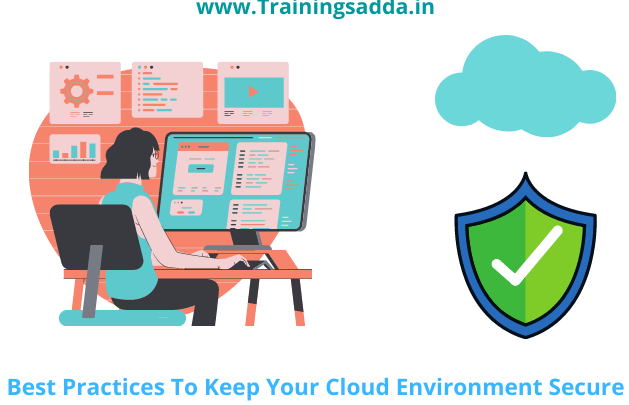Best Practices To Keep Your Cloud Environment Secure

Last Updated on September 8, 2021 by Prabhakar A
Cloud computing is slowly becoming the norm in a number of industries and markets around the globe. As more and more companies begin to use cloud applications and technology, the continued rise in cloud security concerns will rise as well. There’s a lot to know when it comes to cybersecurity.
From the verbiage to the best practices, there’s a lot about cloud environment security that some newcomers might not be fully versed in. Have no fear; we’re going to go over all of the best practices to keep your cloud environment secure so you can reap the benefits of the technology rather than stress over the dangers.
Know more: Benefits of 21st Century Technology
Table of Contents
Best Practices for Cloud Security
You don’t need to be a devops security expert to know how to best utilize the cloud with proper environmental precautions set to protect your information and data. Here are some of the key things to know about cloud security.
Data Encryption Moves to the Cloud
Most programs where you save sensitive data encrypt the files to protect them from unwanted viewers. When you move your computing processes to the cloud, encryption moves to the cloud as well. That’s a good thing; cloud environments can not only encrypt stored info in the cloud but also the files that move to and from the digital ecosystem.
There’s also an added opportunity to add additional encryption choices that go beyond standard security processes. A great way to boost your encryption practices is to review policies related to cloud storage policies.
Cloud Data Storage Practices to Know
When you choose a cloud provider, it’s a task to get everything moved to the new digital space. Of course, there’s a good chance you might change providers during the course of your business’ actions in the cloud. Plus, you’re not always going to want to keep certain files and information in the cloud depending on changing employees and clients.
Reviewing cloud data storage practices is important to make sure you have full control over what you can delete as well as upload to the cloud. There’s also the necessary process of reviewing access control to cloud data.
Check this: Is it Worth to take Certification in Data Science?
How to Best Manage Access to the Cloud for Multiple Users
Depending on the size of your team, you’re likely going to need to manage a number of levels of security clearance. From standard employees to mid-managers and executives, there are a number of different tiers you’ll need to develop for your team.
There’s a lot of turnover in most industries, including within an organization. You don’t just want to control who can access info in the cloud while they work for you, but also limit access if employees change jobs. It’s easy to manage these clearances but staying organized and keeping track of all of them can be the trickier part.
Learn more: How To Protect Your Android Device From Cyber Attacks?
Make a Habit of Penetration Tests
Hackers can strike at any moment, so here’s a great way to manage the continued risk posed by cybercriminals. Cloud penetration testing is the practice of checking for gaps in the cloud ecosystem without waiting for a hacker to do this.
These tests are conducted as part of an ongoing assessment of your cloud stature. When it comes to the cloud ecosystem, there are always updates and changing policies that could lead to a gap in your protections even if no major change to your cloud apps occurs. In these cases, the visibility of new vulnerabilities is hard to spot; penetration testing takes care of this and prepares you for better security by pointing out clear areas that need improvement.
Conclusion
Cloud security practices are essential to making the most of what cloud computing can do for your business. When you prioritize security, you ensure a successful future for your business in the cloud!
Comments
0 comments
![How to solve or fix the [pii_email_aef67573025b785e8ee2] error code?](https://www.trainingsadda.in/wp-content/uploads/2020/10/How-to-solve-or-fix-the-pii_email_aef67573025b785e8ee2-error-code-390x220.png)



